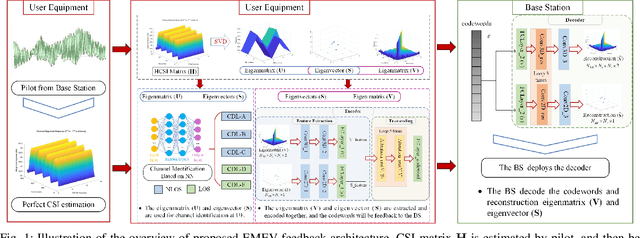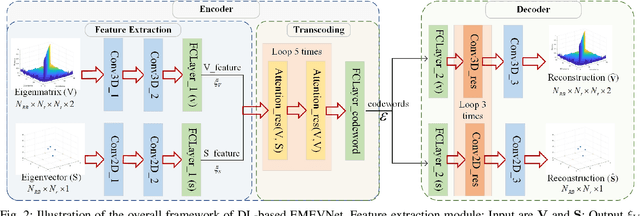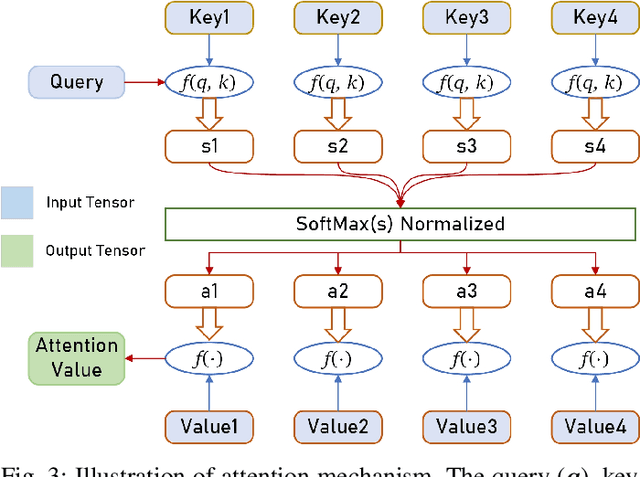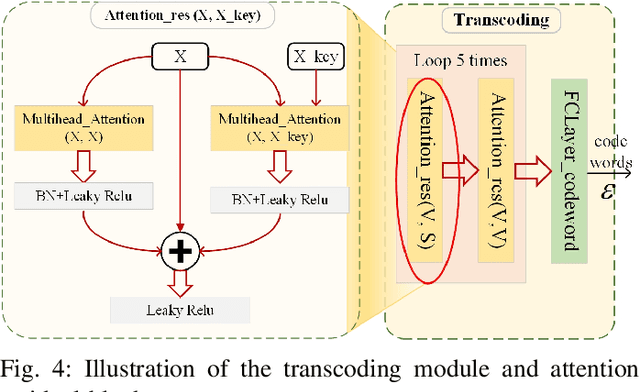Yibin Zhang
Attention Mechanism Based Intelligent Channel Feedback for mmWave Massive MIMO Systems
Aug 13, 2022



Abstract:The potential advantages of intelligent wireless communications with millimeter wave (mmWave) and massive multiple-input multiple-output (MIMO) are all based on the availability of instantaneous channel state information (CSI) at the base station (BS). However, in frequency division duplex (FDD) systems, no existence of channel reciprocity leads to the difficult acquisition of accurate CSI at the BS. In recent years, many researchers explored effective architectures based on deep learning (DL) to solve this problem and proved the success of DL-based solutions. However, existing schemes focused on the acquisition of complete CSI while ignoring the beamforming and precoding operations. In this paper, we propose an intelligent channel feedback architecture designed for beamforming based on attention mechanism and eigen features. That is, we design an eigenmatrix and eigenvector feedback neural network, called EMEVNet. The key idea of EMEVNet is to extract and feedback effective information meeting the requirements of beamforming and precoding operations at the BS. With the help of the attention mechanism, the proposed EMEVNet can be considered as a dual channel auto-encoder, which is able to jointly encode the eigenmatrix and eigenvector into codewords. Hence, the EMEVNet consists of an encoder deployed at the user and the decoder at the BS. Each user first utilizes singular value decomposition (SVD) transformation to extract the eigen features from CSI, and then selects an appropriate encoder for a specific channel to generate feedback codewords.
A Real-World Radio Frequency Signal Dataset Based on LTE System and Variable Channels
May 25, 2022



Abstract:Radio Frequency Fingerprint (RFF) identification on account of deep learning has the potential to enhance the security performance of wireless networks. Recently, several RFF datasets were proposed to satisfy requirements of large-scale datasets. However, most of these datasets are collected from 2.4G WiFi devices and through similar channel environments. Meanwhile, they only provided receiving data collected by the specific equipment. This paper utilizes software radio peripheral as a dataset generating platform. Therefore, the user can customize the parameters of the dataset, such as frequency band, modulation mode, antenna gain, and so on. In addition, the proposed dataset is generated through various and complex channel environments, which aims to better characterize the radio frequency signals in the real world. We collect the dataset at transmitters and receivers to simulate a real-world RFF dataset based on the long-term evolution (LTE). Furthermore, we verify the dataset and confirm its reliability. The dataset and reproducible code of this paper can be downloaded from GitHub link: https://github.com/njuptzsp/XSRPdataset.
A Novel Channel Identification Architecture for mmWave Systems Based on Eigen Features
Apr 11, 2022



Abstract:Millimeter wave (mmWave) communication technique has been developed rapidly because of many advantages of high speed, large bandwidth, and ultra-low delay. However, mmWave communications systems suffer from fast fading and frequent blocking. Hence, the ideal communication environment for mmWave is line of sight (LOS) channel. To improve the efficiency and capacity of mmWave system, and to better build the Internet of Everything (IoE) service network, this paper focuses on the channel identification technique in line-of- sight (LOS) and non-LOS (NLOS) environments. Considering the limited computing ability of user equipments (UEs), this paper proposes a novel channel identification architecture based on eigen features, i.e. eigenmatrix and eigenvector (EMEV) of channel state information (CSI). Furthermore, this paper explores clustered delay line (CDL) channel identification with mmWave, which is defined by the 3rd generation partnership project (3GPP). Ther experimental results show that the EMEV based scheme can achieve identification accuracy of 99.88% assuming perfect CSI. In the robustness test, the maximum noise can be tolerated is SNR= 16 dB, with the threshold acc \geq 95%. What is more, the novel architecture based on EMEV feature will reduce the comprehensive overhead by about 90%.
 Add to Chrome
Add to Chrome Add to Firefox
Add to Firefox Add to Edge
Add to Edge